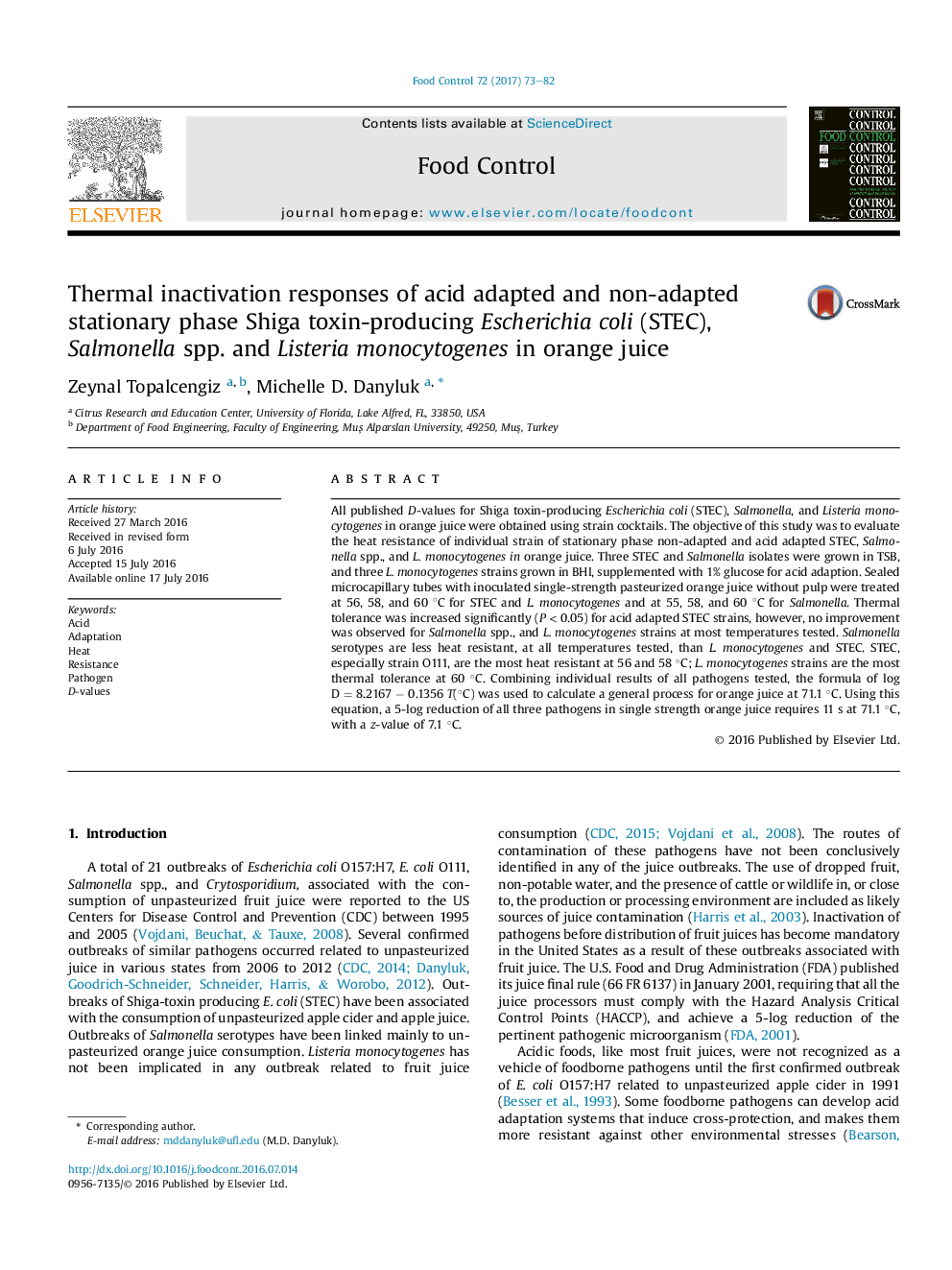| کد مقاله | کد نشریه | سال انتشار | مقاله انگلیسی | نسخه تمام متن |
|---|---|---|---|---|
| 4558950 | 1330401 | 2017 | 10 صفحه PDF | دانلود رایگان |
• The D-values here are lower than those reported in literature at all temperatures.
• This may be due to methodology and serotype/cocktail differences.
• Relationships among the D-values are more important than calculated D-values.
• 11 s at 71.1 °C achieves a 5-log reduction of pathogens in orange juice.
All published D-values for Shiga toxin-producing Escherichia coli (STEC), Salmonella, and Listeria monocytogenes in orange juice were obtained using strain cocktails. The objective of this study was to evaluate the heat resistance of individual strain of stationary phase non-adapted and acid adapted STEC, Salmonella spp., and L. monocytogenes in orange juice. Three STEC and Salmonella isolates were grown in TSB, and three L. monocytogenes strains grown in BHI, supplemented with 1% glucose for acid adaption. Sealed microcapillary tubes with inoculated single-strength pasteurized orange juice without pulp were treated at 56, 58, and 60 °C for STEC and L. monocytogenes and at 55, 58, and 60 °C for Salmonella. Thermal tolerance was increased significantly (P < 0.05) for acid adapted STEC strains, however, no improvement was observed for Salmonella spp., and L. monocytogenes strains at most temperatures tested. Salmonella serotypes are less heat resistant, at all temperatures tested, than L. monocytogenes and STEC. STEC, especially strain O111, are the most heat resistant at 56 and 58 °C; L. monocytogenes strains are the most thermal tolerance at 60 °C. Combining individual results of all pathogens tested, the formula of log D = 8.2167 − 0.1356 T(°C) was used to calculate a general process for orange juice at 71.1 °C. Using this equation, a 5-log reduction of all three pathogens in single strength orange juice requires 11 s at 71.1 °C, with a z-value of 7.1 °C.
Journal: Food Control - Volume 72, Part A, February 2017, Pages 73–82
